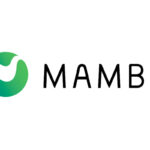The advancement and development of the digital wallet and the apps that support them have been a lifesaver for millions of unbanked and underbanked members of society. The digital wallet is beginning to address the fact this sizeable population is often overlooked and misunderstood. It is not that the unbanked and underbanked do not have a need; it is simply this need has been ignored by traditional financial institutions. Recent reports have suggested that this population reduces as local communities and financial institutions manage their demand for financial products.
Globally, millions of unbanked are using mobile money technology every day. This use of digital wallets and payment apps has transformed financial product delivery to this community. From avoiding lengthy queues to providing a more secure way of making financial transactions, digital wallets create a way to provide services to this community, especially for those who cannot or do not want access to traditional banking services.
Digital wallets are the future for cash disbursements. Digital wallets and mobile payment apps allow this significant minority to make payments, store funds, and transfer money to other accounts. They are more accessible, safer, and generally have lower fees. They provide:
- features for digital onboarding,
- in-store and online payment, bill payment
- remittance and domestic transfer
- loyalty and rewards
- companion cards for acceptance in-store, online and for cash disbursement through ATM
Digital wallets and mobile payment apps promote financial inclusion. A digital wallet significantly reduces the need for cash and decreases the real risks that the unbanked and underbanked face, including fraud, theft, and loss. In addition, a digital wallet allows and enables the unbanked and underbanked to become more fully functioning members of society.
The digital wallet also acts as a centralized information store, enabling customers to store personal data, such as birth certificates, drivers’ licenses, passports, health care numbers, and other personal information in electronic form, rather than physical documents.
As more people become aware of the unbanked and underbanked and realize the relatively untapped, potentially lucrative opportunity they present, a range of services will be offered to capture this market. There is no technical reason why, in the 21st century, an unbanked or underbanked segment exists.

